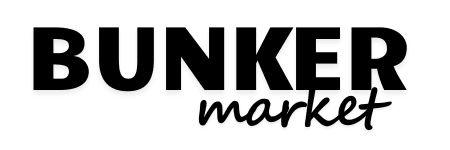The Italian shipping company Liberty Lines ceremonially launched the world’s first hybrid fast ferry of this category and size in Trapani, Sicily. The ferry is powered by an mtu hybrid propulsion system from Rolls-Royce. The 39.5-meter-long ship has a capacity of 251 passengers, reaches a speed of over 30 knots, and will significantly reduce the impact of ship operations on the environment.
The “Vittorio Morace,” built by the Spanish shipyard Astilleros Armon and designed by Incat Crowther, is the world’s first IMO HSC (High-Speed Craft) hybrid fast ferry of this size and has been classified as a “Green Plus” ship by the Italian classification society RINA.
The new member of the fleet, named after the founder of the shipping company, is the first of nine ferries that will operate between Sicily and the neighboring Aeolian and Egadi islands, as well as between the Italian mainland, Croatia, and Slovenia.
The battery-electric part of the drive is used for locally emission-free driving in the harbor area and as a booster. CO2 emissions are reduced by the particularly efficient mtu Series 4000 diesel engines, which can also run on renewable diesel (HVO, hydrotreated vegetable oil). Its use can lower the CO2 footprint by up to 90 percent. Furthermore, the comparatively low overall weight of both the engines and the hybrid drive system contributes to high vessel propulsion efficiency, thereby reducing fuel consumption and emissions.
No compromises on speed and range of the Ferry, yet environmentally friendly
Gennaro Carlo Cotella, CEO of Liberty Lines, says “We chose mtu hybrid systems because we want to minimize the environmental impact of our new fleet while not compromising on the high speed and range of our vessels. As we have trusted mtu products for decades, we have also opted for this partnership for our major fleet renewal.”

The ferries will be equipped with integrated mtu hybrid propulsion systems from Rolls-Royce, each comprising two mtu 16-cylinder Series 4000M65L engines, two electric engines, two variable-speed gensets, three battery systems, the switchgear and power supply system and the mtu NautIQ Blue Vision NG control and monitoring system. The vessels will utilise different operating modes as required. The picture shows the engine room of the Vittorio Morace.
Denise Kurtulus, Vice President Global Marine at Rolls-Royce Power Systems, says “Liberty Lines is the ideal partner to demonstrate the progress that can be made towards environmentally and climate-friendly ship operation: We have used all possibilities and combined highly efficient combustion engines with exhaust gas aftertreatment, batteries, and electric motors with an intelligent electronic control system to create an emission-optimized system. Together with Liberty Lines, Armon, and Incat Crowther, we have developed a passenger ferry that will set new standards in this category of shipbuilding. We are proud of this. Our goal is to help this technology achieve a breakthrough.”
Automation and monitoring: mtu NautIQ Blue Vision NG and mtu NautIQ Foresight
All components are coordinated by the mtu NautIQ Blue Vision NG control and monitoring system. The complete propulsion systems of the first two ships will be monitored by the mtu NautIQ Foresight equipment health monitoring system. It collects data on the technical condition and analyzes and stores it to improve the operational availability of the ship, reduce maintenance costs, and lower fuel consumption and thus CO2 emissions.
How does the mtu hybrid propulsion system work?
When entering and leaving the port areas, the batteries ensure silent and emission-free maneuvering. They supply power to all the ship’s electrical equipment and the bow thrusters. When the ship leaves the harbor and increases speed, the mtu combustion engines are used. They drive the propellers directly, enabling the ship to travel at speeds of up to 30 knots. At the same time, they drive the hybrid electric motors via the gearboxes to charge the batteries and supply the electrical consumers on board without having to operate gensets.

The generators on board are available as a backup. When the ship is in harbor, the batteries are used for the entire electrical supply on board during shorter stopovers, also silently and emission-free without power generators. During longer stopovers, shore power can be connected to recharge the batteries.
Technical data for mtu Hybrid PropulsionPacks for Liberty Lines ferries
- Combustion Engines: 2 x mtu 16V4000 M65L, rated at 2560 kW @ 1800 rpm. IMO Tier III and US EPA Tier 4 emission compliant, together with mtu SCR exhaust after-treatment systems
- Gearboxes: Reintjes WVSA-1542 hybrid-capable with clutchable PTO/PTIs for interfacing with Electric Machines
- Electric Machines: 2 x Danfoss Editron EM-PMI375 T1100-2900 permanent magnet E-Machines. Providing in this case about 130 kW each of propulsion power, and when in charging mode up to about 260 kW each. By using variable-speed electric motors, it allows the use of simple fixed pitch propellers for the vessel.
- Generator Sets: 2 x 100 kWe variable-speed gensets, operating from 1000 – 2400 rpm, with lightweight PM generators
- Batteries: 3 x 11 EST Green Orca 1050 Battery Packs (346 kWh total installed)
- DC Switchboards: (incl. DC power converters, circuit breakers, filters, and protection equipment)
- Electrical Power Management System
- mtu NautIQ Blue Vision NG: Hybrid Control and Monitoring System – controlling and monitoring the complete Hybrid Propulsion system, and also the main ship systems (such as tanks, bilge alarms, gensets, etc.)
Source Rolls-Royce

